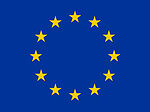Flexibility transactions: How can smart buildings participate?
Energy flexibility in buildings can enhance and strengthen the operation of the energy system in a cost-effective manner. To that scope, the existing thermal energy infrastructure within buildings and associated energy supply networks represent a considerable asset for flexibility. Recent advancements in smart sensing and metering, smart appliances, electric vehicles, and energy storage technologies can facilitate energy flexibility in buildings and help energy supply systems improve operational management[1].
Though, in order for buildings to participate in flexibility transactions, they need to achieve some minimum levels of smartness that can be certified through the use of the Smart Readiness Indicator (SRI) Methodology. The mandatory implementation of the SRI that is linked to the energy performance certificate (EPC) could also reduce final energy consumption.
Based on these facts, business actors like aggregators and retailers need to have access to detailed information about buildings towards evaluating their smart readiness and assessing their capabilities for getting involved in flexibility transactions. This information can include data on the building’s energy consumption, HVAC system performance, lighting usage, occupancy patterns, and more. As a result, they need appropriate tools and methods to support the continuous assessment and certification of the Smart Readiness status of buildings.
Evaluation of buildings smart readiness: The BEYOND solution
The energy performance and smart readiness certification tool (EPSRC) that will be developed in the context of BEYOND will support these end-users in getting the necessary information they need and assess the smart readiness status of the buildings. The tool will provide several functionalities that will cover the above-mentioned aspects. Some of these functionalities can be found below:
-Provision of real-life data streams and appropriate analytics for monitoring in real-time energy performance.
-Analysis of energy consumption and performance outliers
– Visualization of a set of outliers that affect energy performance and support energy management decision-making process
-Provision of different types of SRI defined by the user
-Possibility for the user to select the level of smartness of specific devices
-Ranking of the building according to the SRI calculation and achievement against specified benchmarks and thresholds
These and many others functionalities will be available soon to the EPSRC!
References
[1] Li, R., Satchwell, A.J., Finn, D., Christensen, T.H., Kummert, M., Le Dréau, J., Lopes, R.A., Madsen, H., Salom, J., Henze, G. and Wittchen, K., 2022. Ten questions concerning energy flexibility in buildings. Building and Environment, 223, p.109461.






